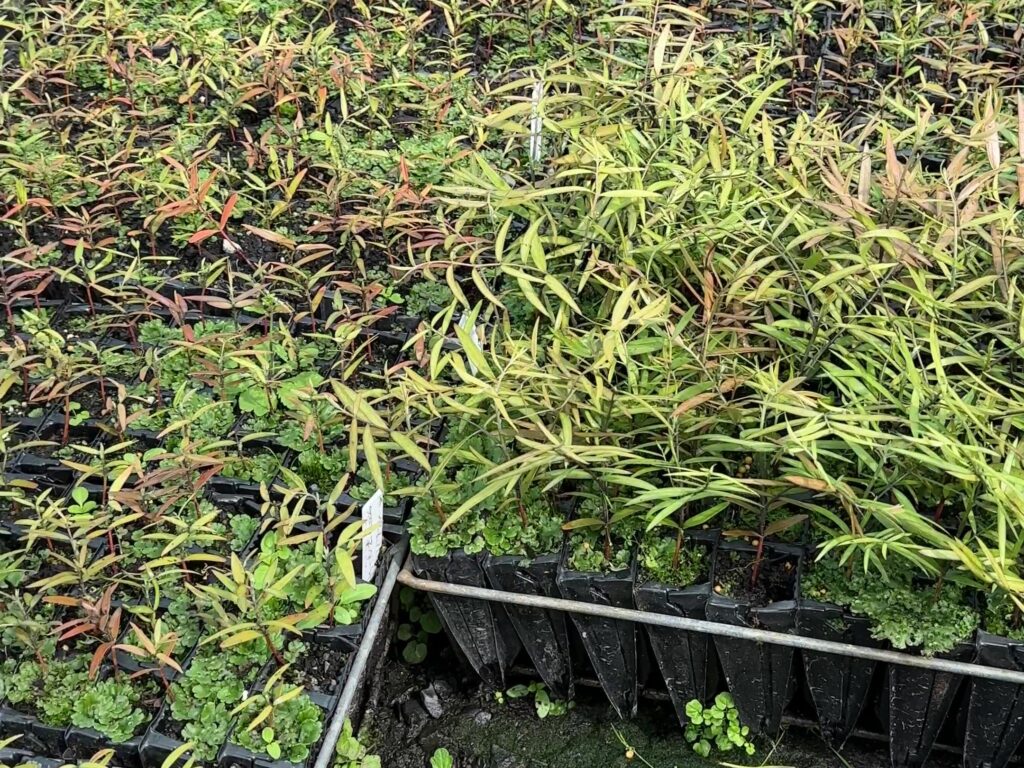Kauri Seedlings - One Year On
By May 2023, I was fortunate to obtain 34,000 Kauri seeds from three separate locations in the North Island: Whangarei/Mangamuka, Thames (Coromandel Peninsula), and Te Puna (near Tauranga). One year on, I was keen to see how many had germinated and survived through the Dunedin winter at Ribbonwood Nurseries.
The earliest seeds to arrive (from Whangarei/Mangamuka), were the first to germinate in the seed trays. I recall seeing them in the seed trays when I was in Taieri Beach to plant Area 1 with its nurse trees. They were the tallest.

At the same time, seeds sourced from Te Puna had yet to germinate. Phil Dunn from Ribbonwood Nurseries mentioned that the germination rate from the Te Puna seeds was not as good as the other seed source locations. These were the last to arrive, and Kauri seeds have a short viability period. The time between harvesting and planting the seeds may have affected the germination rate. I mentioned this to Greg Steward from Scion. He advised that the Te Puna trees were the youngest of the three source areas. Two elements may have affected the germination rate. Fortunately, I sourced only 6,000 seeds from Te Puna, with the majority coming from Whangarei/Mangamuka (18,000) and Thames (10,000).
The vast majority of seedlings have been pricked out of the seed trays and transferred to root trainers. They will be replanted once more into 1 L pots, but I have no idea when Phil Dunn will do that. I suspect it will depend on the growth in the root trainers. The Whangarei/Mangamuka seedlings are twice the size of the Thames seedlings.
I spoke to Dr Janice Lord from the University of Otago. She advised me to plant each of the 3 Areas with one third of stems from each unique source. I can do that for Area 1 (and perhaps Area 2), but I’ll have no Te Puna trees left for Area 3. Once the stem count is known for each of the seed sources, I will change the ratios to accommodate the fewer Te Puna stems.

There is just over a year before the first trees are scheduled for planting within Area 1 (May 2025). I don’t know how much the stems will grow over the next 13 months, but I can’t see where 30 cm is going to come from for a slow growing tree, in a cool environment.
Greg Steward said the height of the tree was not as important as the girth of the stem, affecting its ability to survive the weather. Each tree will have its own tree guard, so that will provide some additional shelter. The whole program timing will be assessed at the end of 2024. If the first Kauri planting gets pushed back by 6 months, I’ll still be in front of my original 6 year planting program.
The video of my visit to Ribbonwood Nurseries is KT019, which can be viewed here or on the Kauri Trees YouTube channel.
01 April 2024
